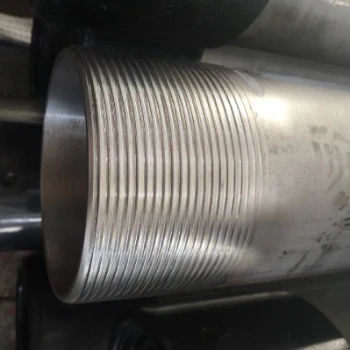- Afrikaans
- Albanian
- Amharic
- Arabic
- Armenian
- Azerbaijani
- Basque
- Belarusian
- Bengali
- Bosnian
- Bulgarian
- Catalan
- Cebuano
- Corsican
- Croatian
- Czech
- Danish
- Dutch
- English
- Esperanto
- Estonian
- Finnish
- French
- Frisian
- Galician
- Georgian
- German
- Greek
- Gujarati
- Haitian Creole
- hausa
- hawaiian
- Hebrew
- Hindi
- Miao
- Hungarian
- Icelandic
- igbo
- Indonesian
- irish
- Italian
- Japanese
- Javanese
- Kannada
- kazakh
- Khmer
- Rwandese
- Korean
- Kurdish
- Kyrgyz
- Lao
- Latin
- Latvian
- Lithuanian
- Luxembourgish
- Macedonian
- Malgashi
- Malay
- Malayalam
- Maltese
- Maori
- Marathi
- Mongolian
- Myanmar
- Nepali
- Norwegian
- Norwegian
- Occitan
- Pashto
- Persian
- Polish
- Portuguese
- Punjabi
- Romanian
- Russian
- Samoan
- Scottish Gaelic
- Serbian
- Sesotho
- Shona
- Sindhi
- Sinhala
- Slovak
- Slovenian
- Somali
- Spanish
- Sundanese
- Swahili
- Swedish
- Tagalog
- Tajik
- Tamil
- Tatar
- Telugu
- Thai
- Turkish
- Turkmen
- Ukrainian
- Urdu
- Uighur
- Uzbek
- Vietnamese
- Welsh
- Bantu
- Yiddish
- Yoruba
- Zulu
what is the difference between casing and tubing?
Understanding the Difference Between Casing and Tubing in Oil and Gas Operations
In the oil and gas industry, the terms casing and tubing refer to two critical components of a well, but they serve distinct purposes and are used in different contexts. Understanding the differences between casing and tubing is essential for anyone involved in drilling, production, or well maintenance.
What is Casing?
Casing is the structural framework of a wellbore. Once a well is drilled, casing pipes made of steel are inserted into the well to stabilize the borehole and prevent it from collapsing. The process of installing casing is known as casing the well.
The primary functions of casing are
1. Well Integrity Casing provides mechanical support to the wellbore, ensuring it remains open and stable under various pressures and geological conditions. It also prevents the entry of groundwater into the well, thereby protecting both the environment and the integrity of the well.
2. Isolation of Compartments In many cases, the subsurface formations contain various fluids under different pressures. Casing helps isolate these formations from each other, preventing unwanted fluid movement between them. This is vital in maintaining the pressure balance and avoiding blowouts.
Casing is typically cemented into place to enhance its stability and further prevent fluid migration. Different types of casing—such as surface casing, intermediate casing, and production casing—are employed at various stages of well construction, each tailored to specific depths and conditions.
what is the difference between casing and tubing?

What is Tubing?
Tubing, on the other hand, is inserted inside the casing once the well has been completed and is ready for production. Tubing is the conduit through which oil or gas flows from the reservoir to the surface. It is typically smaller in diameter than casing and is designed to withstand the pressures encountered during hydrocarbon extraction.
The key purposes of tubing include
1. Production Efficiency Tubing provides a direct path for the oil or gas to travel to the surface. It is engineered to optimize flow rates, allowing for efficient production.
2. Pressure Management Tubing is critical in maintaining the pressure needed for production. It can be equipped with various tools, such as pumps or valves, to facilitate extraction while managing the pressure dynamics within the well.
3. Ease of Maintenance Unlike casing, tubing can be easily removed and replaced without having to decommission the entire well. This flexibility is advantageous for maintenance operations, allowing for the replacement of worn-out tubing or the addition of new technology to enhance production.
Conclusion
In summary, casing and tubing are foundational elements of oil and gas wells that serve different but complementary roles. Casing acts as the protective structure of the well, ensuring its stability and integrity, while tubing is the internal pipe that facilitates the flow of hydrocarbons to the surface. Both components are vital for the successful operation of a well, and understanding their distinctions is crucial for those engaged in drilling and production activities. As technology advances in the oil and gas sector, innovations in casing and tubing design continue to enhance the safety and efficiency of hydrocarbon extraction, underscoring their importance in modern energy production.
-
Tubing Pup Joints: Essential Components for Oil and Gas OperationsNewsJul.10,2025
-
Pup Joints: Essential Components for Reliable Drilling OperationsNewsJul.10,2025
-
Pipe Couplings: Connecting Your World EfficientlyNewsJul.10,2025
-
Mastering Oilfield Operations with Quality Tubing and CasingNewsJul.10,2025
-
High-Quality Casing Couplings for Every NeedNewsJul.10,2025
-
Boost Your Drilling Efficiency with Premium Crossover Tools & Seating NipplesNewsJul.10,2025







